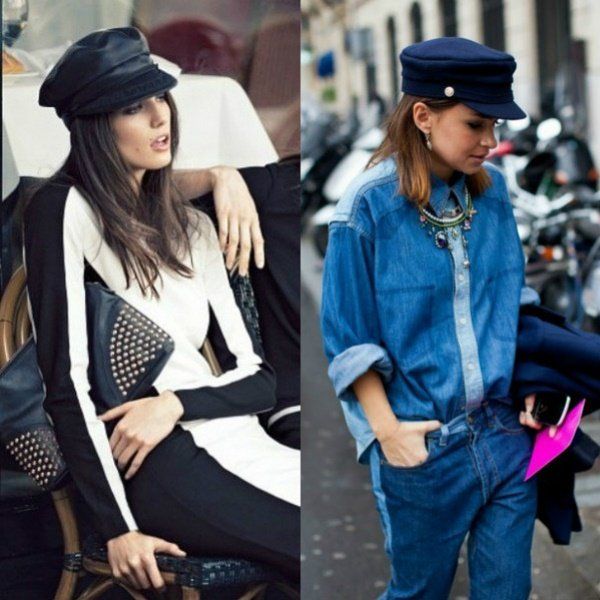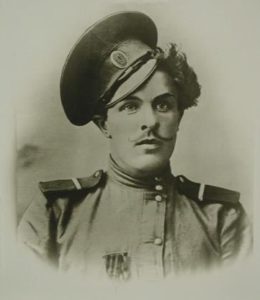 Men's hats are an integral part of the wardrobe. Such clothing includes, among other things, a cap that appeared quite a long time ago.
Men's hats are an integral part of the wardrobe. Such clothing includes, among other things, a cap that appeared quite a long time ago.
Such products have different styles, their design features depend on the area of application.
Definition
 A cap is a flat headdress with a wide, hard band and a visor (or without it), originally used exclusively by men.
A cap is a flat headdress with a wide, hard band and a visor (or without it), originally used exclusively by men.
This product is worn mainly by military personnel or people belonging to certain professions (border guards, postmen, police officers, foresters, railway workers).
History of the cap
In the past, this product was called a “fodder hat.” It was used as a uniform headdress in the armed forces and departments of many countries.
 Forager soldiers, whose duties included procuring food and fodder (animal feed), wore characteristic practical colorful hats with a band.
Forager soldiers, whose duties included procuring food and fodder (animal feed), wore characteristic practical colorful hats with a band.
Such products resembled modern models only by a band.
Reference! From a historical point of view, the cap is recognized as a modified version of the army shako (a hat that had a high and impractical shape, which was used by infantrymen and cavalrymen of the armies of Europe and America during the Napoleonic era). Until the middle of the 19th century, the shape of the shako gradually decreased, eventually coming as close as possible to the modern look of the cap. For different branches of the military, they began to make products of different colors with the addition of stripes.
Cap in the Russian army
Items of this kind began to be used as headdress in the Russian army during the reign of Paul I (at the end of the 18th century). Such an attribute of this product as a cockade appeared already in the 19th century. In the same period, other characteristic distinctive features appeared (for example, emblems of military branches), after which this product acquired a look that most closely corresponds to modern ideas about it.
 In the troops of the Russian Empire, a headdress of this kind was classified as a separate category of clothing items for troops - uniform items. These hats were made in regimental workshops. These products were released in the form of materials and each time for a clearly defined period.
In the troops of the Russian Empire, a headdress of this kind was classified as a separate category of clothing items for troops - uniform items. These hats were made in regimental workshops. These products were released in the form of materials and each time for a clearly defined period.
Reference! The Tsar's decree of September 23, 1811 introduced a soldier's cap with a round crown, but despite this, such hats were made without this detail for almost 100 years.
Components of a cap

Every headdress of this kind consists of the following elements:
- cockade (fabric or metal distinctive badge located in the central part of the band);
- welt (a twisted decorative cord located above the visor or a belt fastened under the chin, which is used to avoid losing the cap in the wind);
- visor (visor fixed above the face horizontally or tilted down);
- edging (edging running along the top of the band);
- band (a headband tightly clasping the head from 3 to 5 cm);
- flat or rounded crown (the main part of the product);
- steel hoop (reinforcing insert designed to maintain the appropriate shape of the product);
- cases (accessories used to store such hats).
Types of caps

According to their purpose, such headdresses are usually divided into field, everyday, ceremonial and ceremonial weekend hats.


 The main types include:
The main types include:
- cap - a civilian version for warm weather, with a large crown and a high band (used in 1930-40 among political workers and government agencies);
- field cap - uniform headdress intended for use in field conditions (made from khaki-colored material without the use of reinforcing inserts);
- cap - a cap without a visor (used and continues to be used in the navy).
Such products may differ in the color of the fabric of the top, piping, band and in the design of the band and walls of the product.
Where is the cap used now?
At the end of the last century, women also began to use this item, since the main emphasis in the fashion trends of the 70s was placed on elements of the men's wardrobe.
 Therefore, in addition to the traditional uniform men's caps, women's models began to appear.
Therefore, in addition to the traditional uniform men's caps, women's models began to appear.
 In the modern world of fashion, women's cap models primarily belong to the youth wardrobe. Representatives of the fair sex appreciate the cap primarily because the classic, strict shape of this headdress softens facial features, making the image more expressive, regardless of age.
In the modern world of fashion, women's cap models primarily belong to the youth wardrobe. Representatives of the fair sex appreciate the cap primarily because the classic, strict shape of this headdress softens facial features, making the image more expressive, regardless of age.
 The uniform cap went through a lot of transformations, due to the need to adapt this headdress to different types of troops and apply various distinctive signs and colors to it. By the shape, color and characteristic icons you can always find out who the owner of this thing is.
The uniform cap went through a lot of transformations, due to the need to adapt this headdress to different types of troops and apply various distinctive signs and colors to it. By the shape, color and characteristic icons you can always find out who the owner of this thing is.


 Reference! From a historical point of view, the cap is recognized as a modified version of the army shako (a hat that had a high and impractical shape, which was used by infantrymen and cavalrymen of the armies of Europe and America during the Napoleonic era). Until the middle of the 19th century, the shape of the shako gradually decreased, eventually coming as close as possible to the modern look of the cap. For different branches of the military, they began to make products of different colors with the addition of stripes.
Reference! From a historical point of view, the cap is recognized as a modified version of the army shako (a hat that had a high and impractical shape, which was used by infantrymen and cavalrymen of the armies of Europe and America during the Napoleonic era). Until the middle of the 19th century, the shape of the shako gradually decreased, eventually coming as close as possible to the modern look of the cap. For different branches of the military, they began to make products of different colors with the addition of stripes. Reference! The Tsar's decree of September 23, 1811 introduced a soldier's cap with a round crown, but despite this, such hats were made without this detail for almost 100 years.
Reference! The Tsar's decree of September 23, 1811 introduced a soldier's cap with a round crown, but despite this, such hats were made without this detail for almost 100 years. 0
0





